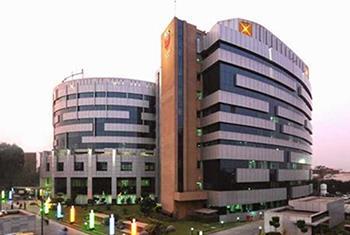Cost
Like any medical procedure, the cost of meningioma surgery can vary depending on several factors, such as the surgeon’s experience, the location and reputation of the medical facility, and the treatment plan selected.
The average cost of meningioma surgery in the United States is between $30,000 and $50,000, but patients can rely on specialized medical destinations like India to provide equally competent care at a much lower cost.
The total cost of meningioma surgery can vary depending on several factors. These variables can be divided into three groups: preoperative, intraoperative, and postoperative.
Preoperative Elements
Preoperative imaging tests, like CT or MRI scans, are required to assess the patient’s condition and schedule the procedure. Depending on the facility, the area, and insurance coverage, the cost of these imaging studies may change.
Preoperative blood tests such as blood typing, coagulation profile, and complete blood count are frequently necessary. Depending on the particular tests conducted and the lab fees, the cost of these tests may change.
- Consultations and Assessments
Before the procedure, patients might need to see neurosurgeons, neurologists, anaesthesiologists, and other specialists. Depending on the location, insurance coverage, and healthcare provider, the cost of these consultations may change.
Intraoperative Elements
The surgeon’s fee may change based on the intricacy of the surgery, their experience, location, and level of expertise. Preoperative consultations, the procedure itself, and follow-up visits after the procedure may all be included in the surgeon’s fees.
The cost of anaesthesia services includes the anaesthesiologist’s fee as well as the price of supplies, monitoring equipment, and medication. The length of the procedure and the particular anaesthetic requirements of the patient may have an impact on the anaesthesia expense.
A major portion of the total cost is attributed to the cost of the surgical facility, which includes supplies, equipment, disposable items, and support personnel. The cost of an operating room can change depending on the hospital, the procedure’s location, and its duration.
Postoperative Factors
Depending on the state of the patient and the possibility of any complications, the length of hospital stay following meningioma surgery may differ. Extended hospital stays result in higher expenses for lodging, nursing care, prescription drugs, and other associated services.
Throughout their hospital stay and the postoperative phase, patients may need to take a variety of medications, such as antibiotics, painkillers, and medications to address any complications. Depending on the precise drugs prescribed, the dosage, the length of use, and insurance coverage, the cost of these medications may change.
- Visits for Follow-Up and Rehabilitation
Patients usually need additional rehabilitation services, like physical therapy or occupational therapy, in addition to follow-up visits with the surgeon. The total cost may vary depending on the number and length of these visits and rehabilitation sessions.
Meningioma Surgery Cost Variations: The cost may vary based on the following elements:
Geographic Elements
Due to variations in local economies, provider fees, and healthcare systems, healthcare costs can differ greatly between nations and regions. Regional cost variations can be attributed to various factors, including labour costs, resource availability, and cost of living.
The components related to the Healthcare Facility:
Depending on their specialization, reputation, infrastructure, and degree of care offered, hospitals and other healthcare facilities can have different costs. In comparison to community hospitals, academic medical centres or specialized neurosurgical centres may have higher costs.
Insurance Protection
The amount of money patients must pay out-of-pocket for meningioma surgery depends on the extent of insurance coverage and reimbursement guidelines. Patients may face differing financial burdens because different insurance plans cover different percentages of the total cost.
Complications and Revisions
Complications like infections, blockages, or malfunctioning shunts may need follow-up surgeries or adjustments. The cost of meningioma surgery is increased overall by these additional procedures and treatments.







